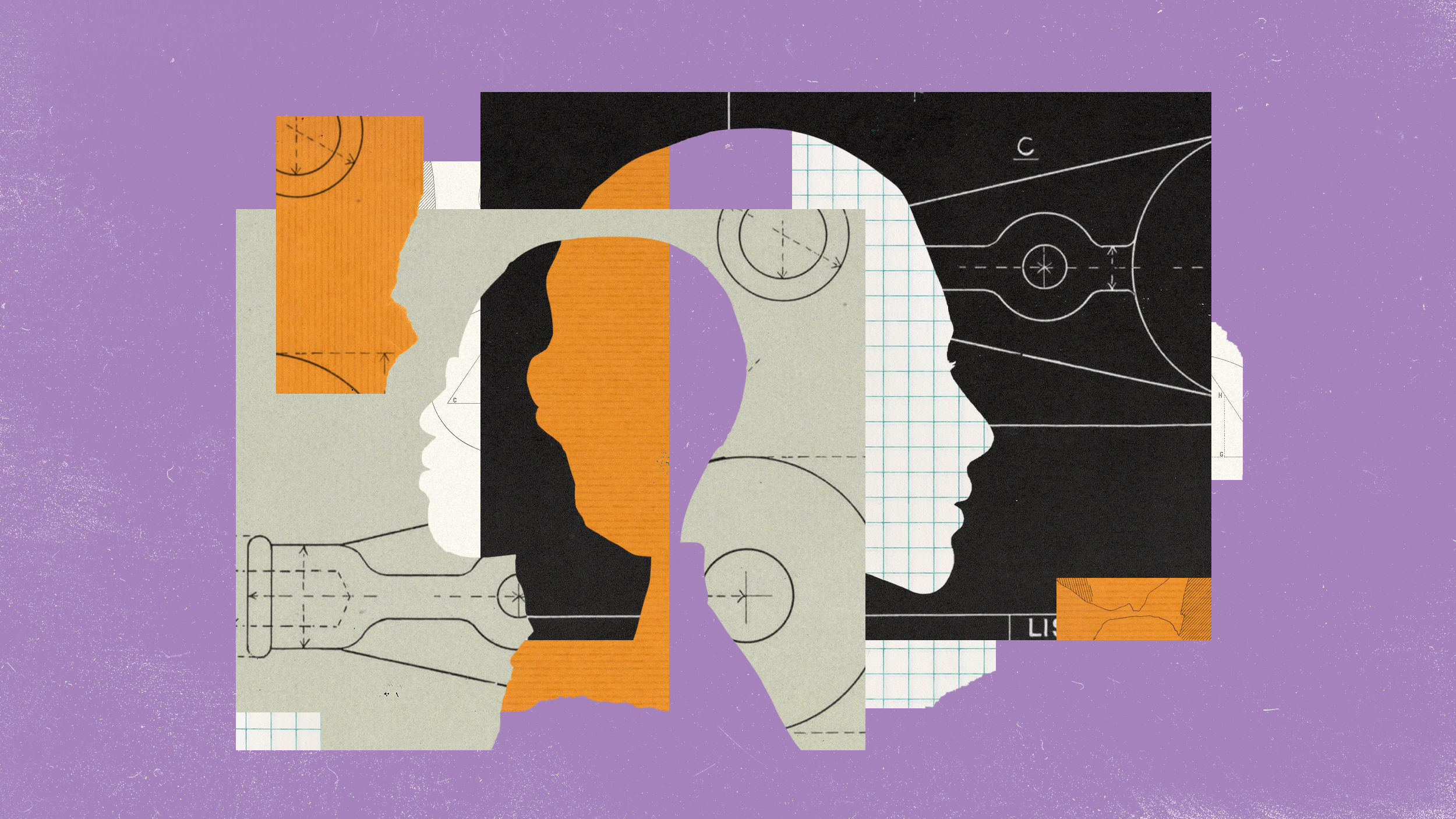Implicit bias training: How can we make it more effective?

While some look at traditional implicit bias training with skepticism, research suggests there are several proven interventions that employees and organizations can benefit from.
Implicit biases are stereotypes that affect our understanding and decisions in an unconscious way. While not intentional, a person can have positive and negative biases toward entire social groups. These attitudes stem from our social environment, cultural norms, and personal experiences.
When unconcious biases are left unchecked in the workplace, they can lead to discriminatory behavior that impacts career advancement, working relationships, a brand’s reputation, and more. Conventional training on this issue seeks to uncover biases through feedback-driven interventions. Training typically covers topics like:
- Where does implicit bias come from?
- What are the various types of implicit biases?
- Who is impacted by implicit bias in the workplace, and how?
- How can the Implicit-Association Test (IAT) assess implicit bias on a personal level?
- How can employees mitigate the harmful effects of implicit bias?
While the need for implicit bias interventions is widely accepted, critics claim that existing testing and training techniques may not be enough to trigger meaningful change. They question whether the IAT can accurately predict personal biases and point to instances when training exacerbated the issue.
How to make implicit bias training more effective
So, what mistakes are organizations making when it comes to implicit bias training? Some of the most common are: using negative language to promote the training, not providing support after training programs are completed, treating the training as a remedial effort (e.g. after harassment complaints), and singling out certain demographics as the primary culprits.
Organizations can replace these practices with a more effective, human-centered approach that positions employees as the heroes on their journey of personal development. The following four strategies give learners the necessary knowledge, skills, and support to make progress along that path.
Engage employees in a human-centered design thinking process
In the early stages of developing an implicit bias program, take steps to place the learner at the heart of intervention planning. To meet learners’ needs, identify their thoughts, feelings, and behaviors regarding implicit bias, their motivations for reducing bias, the goals they hope to achieve, and any potential obstacles that are part of their journey.
Engage learners at all levels via surveys, interviews, and focus groups to identify their challenges and the best ways to present training content to them. Then, use the data to create learner personas that drive program design decisions. When senior leaders, managers, and direct reports are involved in developing a solution for implicit bias, they’re more likely to become champions for the cause rather than critics.

Plan interventions that provide ongoing support
As is often the case when tackling performance issues, unconscious bias training may be part of the solution but not enough on its own. When done in tandem, the following interventions can contribute to a more comprehensive solution that creates lasting change.
- Human-centered implicit bias training and workshops that use positive, motivational language
- Mentoring programs led by trained senior leaders who act as champions of the effort
- Collaboration opportunities that bring together people of various backgrounds (e.g. project teams, committees, and career mentoring programs)
- Ongoing evaluation of organizational systems where implicit biases often fester, such as hiring processes and compensation policies
Incorporate instructional methods that reduce implicit bias
Whether we realize it or not, everyone has implicit biases. Mitigating the issue throughout an entire organization can be a slow and steady process, but implicit bias training is most effective when it incorporates proven instructional methods, such as the four listed below.
Achieve learner “buy-in”
Changing human behavior is no small ask, so it’s crucial to achieve some level of buy-in before diving into various strategies and techniques. Otherwise, some learners may not make it past thoughts that tell them this training is for other people, not them.
Through John Keller’s ARCS Model of Motivation, we know learners are most motivated when they’re convinced that the content is relevant to them. One way instructors can convey relevancy is by presenting implicit bias from a neuropsychological perspective — as the result of the brain’s natural ability to find shortcuts when processing information. While some of these shortcuts are useful, others create human blind spots that we never intended to create. In other words, our brains are wired for efficiency, and with that efficiency comes certain risks that can and should be mitigated.
In the case of implicit bias, the old adage — “acknowledging there is a problem is half the battle” — is very applicable. To further generate awareness, video lessons can be an effective tool for sharing real examples of implicit bias in the workplace. In the Big Think+ lesson below, bestselling author and D&I consultant, Jennifer Brown, discusses assumptions that are commonly made about women in the workforce.
Incorporate counterstereotypes
The Journal of Personality and Social Psychology published “A Meta-Analysis of Procedures to Change Implicit Measures,” where researchers gathered evidence from 492 studies involving nearly 90,000 participants to determine strategies that reduce unconscious bias. Among the 17 different interventions tested, the results indicated that counterstereotype training was the most effective.
Counterstereotypes use evidence to invalidate generalizations about a specific demographic. For example, training could include:
- A Q&A panel with a diverse group of leaders
- Case studies on the success of women in the workplace
- Interviews that share the perspectives of minority groups
- Statistics and storylines that illustrate how all demographics offer valuable knowledge and skills to the organization
Encourage perspective-taking
In implicit bias training, it’s not enough to simply share examples of discrimination and prejudice, although that’s a start. When learners mentally place themselves “in others’ shoes,” they can develop a deeper understanding of, and empathy for, stereotyped groups. Perspective-taking offers the opportunity to do just that.
In perspective-taking exercises, instructors develop scenarios where learners take on the persona of a stereotyped person, such as in a role play or virtual reality simulation of an interpersonal conflict. Afterward, they ask participants questions that encourage self-reflection, such as:
- What did you feel and think when the conflict occurred?
- What did you want to do in response?
- Have you ever experienced anything similar to this in your life?
- Do you share any common struggles or threats with the person in this scenario?
Practice brief meditation
Meditation may not be the first intervention that comes to mind for an implicit bias training program, but a technique known as Loving Kindness Meditation (LKM) has proven to help employees develop greater empathy for others. Alexander Stell and Tom Farsides from the University of Sussex found that focusing seven minutes of LKM toward a specific race was enough to reduce biases toward members of that race. Similarly, researchers Yoona Kang, Jeremy Gray, and John Dovido noticed a significant decrease in implicit biases toward Black people and homeless people after learners completed a seven-week course that included LKM meditation.
There are a few variations of LKM. In one technique, participants sit in a quiet space with their eyes closed and muscles relaxed. While taking deep breaths, they imagine both themselves and a specific demographic of people at peace. Next, they repeat several positive phrases about themselves and the group of people, such as, “May we be happy and safe.” Participants open their eyes once they feel a sense of inner peace toward themselves and others.
Evaluate, measure, and adjust to improve outcomes
A single program will not be enough to eradicate implicit bias throughout an organization, but significant incremental changes can be made. After setting realistic expectations for what your initiatives can deliver, training programs should be evaluated regularly. Stay open minded and adaptable, as programs will likely need to be revamped to keep up with the changing needs of the workforce.
To measure success, learning leaders can distribute surveys to participants to discover how they felt about the training, which key takeaways stayed with them, and how the course has impacted their thoughts, feelings, and behaviors toward others. This data can be used to identify strengths and weaknesses in the program and make necessary adjustments to improve learner satisfaction and behavior change.
A final note
When it comes to interventions for implicit bias, aim for progress not perfection. Organization-wide transformation will require more than a series of training sessions. While biases may start with individuals, structural prejudices also exist and must be addressed for change to be sustainable.
When done well, implicit bias training can contribute to meaningful progress and learners can go on to become change agents at their organization. The key is to take a human-centered approach when planning interventions — placing employees at the heart of the effort and remaining adaptable when solutions need to be adjusted.





